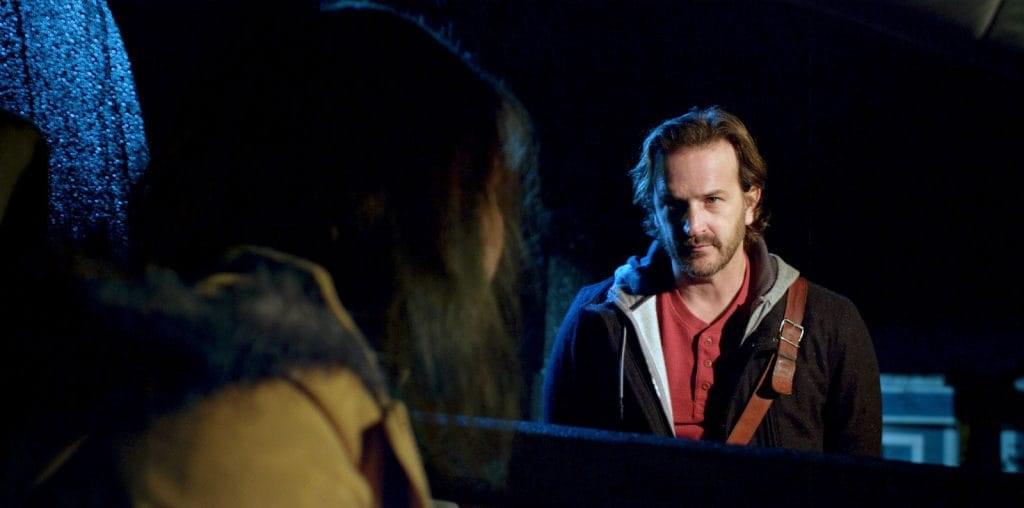
Can there be a downer side to Mardi Gras other than the inevitable killer hangover the day after? Yes, there can and David Redmon shows us the way. It’s all about the beads. His documentary, Mardi Gras: Made in China, reveals the very people behind the creation of these ugly strings of garbage partiers fling all over Bourbon Street inthe hopes of seeing some skin. They’re factory workers in China and they work long, oppressive hours under strict conditions for pay that’s next to nothing. Not that the partying people gone wild at Mardi Gras really care all that much becuase this is really the first time someone has approached them and asked the question, “Where do you think those beads come from?” The factory workers are just as clueless as they have no idea what happens to the beads once they leave the factory. David Redmon wants to change all that with his film by introducing the two sides of this Mardi Gras juggernaut to each other. We get to watch the results.
We spoke with David Redmon about “Mardi Gras: Made in China.”
What brought about the making of “Mardi Gras: Made in China”?
I was thinking about how to show and tell a story on globalization without the traditional expert driven films that put people to sleep. At that time I had been studying Mardi Gras or Carnival in New Orleans for at least 6 years. One night the two issues of spectacular consumption and the manufacturing of Mardi Gras beads blended together. I had no idea what the factories in China would entail, but I knew that the story itself was compelling enough for me to pursue. My original goal was to make a documentary film by following Mardi Gras beads to wherever they were sent for educational/classroom use in a part-time class that I was teaching at school. The film turned out as something else.
How did you assemble your on-screen subjects, namely the factory workers?
The architecture of the factory determined where and how to interact with the factory workers (workers were not allowed to leave, which restricted filming to inside the compound). Secondly, the routine discipline, repetitive movement/motion, and long working hours (18 hour days and nights) determined the assemblege of the workers. Third, spontaneous actions influenced some of the verite footage. For instance, I accidently left my journal on the bead-table where a few workers were sewing together beads. One worker opened my journal out of curiosity and the naked pictures of revelers during Carnival fell out! I heard laughter and immediately noticed workers slowly stopping to work and observing the pictures. So I began filming the event as it unfolded in front of me as I passed out the remaining pictures. A manager approached us and told everyone to work again and that he was going to take away the pictures, until he started looking at them. His disciplined attitude switched to humor and laughter.
Was it difficult shooting footage at Mardi Gras seeing that there are countless perverts wandering everywhere with their cameras poised at the ready for any sign of naked flesh?
No, it was great! In fact, what I wanted was to document the countless number of people with cameras who were intent on filming naked people exchanging beads. The most difficult part was navigating my way through the crowded streets. I wasn’t interested in the nudity as much as the exchange-game and interaction with beads as an extension of factory life. In other words, there’s a wonderful visual metaphor in the film that caters to “exposure.” That is, many people on Bourbon Street “expose” themselves, yet the very basis of how that exposure develops through the manufacturing of beads is rendered “unexposed” in daily life. It’s invisible to us, yet those beads and the workers who make them help create the visibitiy of flesh. Thus, the film addresses your question: it’s common theme is visible and invisible bodies and why the laboring bodies are invisible to us who consume beads.
Do you actually know how the whole bead thing started? I don’t. Is this covered in your film?
Well, I know that the PLASTIC bead exchange started in the 1970s with a game called “weenie-wagging.” Weenie-wagging, according to the published sociology articles (yes, published research actually exists!), occurred when men on balconies began requesting that revelers in the streets give them beads. The story is that a woman yelled, “Show me your dick!” and hence, the men started wagging and dangling their weenies over the balcony in the French Quarter. Hence the creation of the ritual today known as “beads for boobs and pensises.” However, nudity has been a part of almost all Carnivals since the Egyptian and Roman Carnivals. What’s different today is HOW that nudity is and was expressed and our interpretations of it (i.e., from sex as a ritual to give symbolic birth to a new season to today’s Girls and Boys Gone Wild videos).
Do you offer your viewers an alternative to trading beads for skin?
No, not in the film. My purpose is not to outlaw the exposure of flesh. Instead, if people want to trade beads for skin, one alternative is to make their own beads instead of the mass consumption of them. That’s something that I wanted to explore in more detail, but the workers told me that they needed to keep making beads in order to send their money back home to their parents. Therefore, I didn’t want to provide an “easy way out” of the bead exchange for the consumer. Instead, I want people to carefully examine and understand the consequences: economic globalization’s impact on workers who make the products we consume on a daily basis and our implicit involvement in creating those factory conditions because of our collective desires; the consequences of not buying beads or continuing to purchase beads (I’m not advocating the boycott of beads at all; in fact, the opposite: if people are going to purchase beads, then do so through the same company in the film, but but hold them accountable to improving working conditions); and hold the consumer and owners responsible for their actions in the factory; and restructure economic globalization through directly democratic channels of participation. Today, economic globalization is structured through authoritarian relationships, hinging on S&M non-consensual participation. Am I crazy? Not at all. For instance, workers who make beads have no voice and never consent to the economic trade policies created by APPOINTED politicians and bureaucrats, yet the workers are the ones who fulfill the obligations of the trade policies. Therefore, they are structurally forced in a nonconsenting way to be part of the economic relations of pain and pleasure: pain (bondage and discipline — they can’t leave the factory) and pleasure (fun-filled, sexual Carnival).
Are Americans evil or do we just not know any better?
No, Americans are not evil! And it’s not that we don’t know any better, either. One problem is the myth of “equality” and “democracy” in the United States. Currently, equality and democracy is reduced to a formula of how much and how well-skilled a person can consume products. In other words, both equality and democracy are performances and seductions. For example, the current documentaries that focus on Carnival repeat those seductive performances and stories that “everyone is equal during Carnival” while people perform the consumption of beads without ever asking critical questions in terms of how that method of consumption is made possible. Consequently, the media manufactures a myth that subjects people in the United States to “not knowing any better.” This is a major reason why people around the world have such a negative perception of us in terms of “being evil” or “not caring” or “being lazy.” What we, as USians (or Americans) don’t understand is that we are not supposed to know any better because it would go against the interests of those who make money from our manufactured ignorance. Indeed, numerous people who live in the U.S. care, but caring is just an initial moment of understanding that needs to shift from understanding to action if real alterations of the very structure of economic, global relations will occur to benefit everyone. Until then, working conditions here in the U.S., in China, and throughout the majority of the world will not improve for the bottom to mid layers of people in the economic hierarchy. The documentary film illustrates this situation clearly, but it does so with empathy and humor.
What was a major lesson learned while making this film that you will perhaps apply to the making of your next?
That I need money to make the next documentary film because I cannot do it alone again. It took me 4 to 5 years to make this film, and consequently my life has been turned upside down and inside out. I financed, edited, produced, etc. the entire film by myself because I didn’t have money to hire assistance. Money goes to people who have a background in film, to those who already have established films, or those who know someone with money. I have none of those connections. In fact, I’ve never taken a class in film or filmmaking or anything related to film!
What’s up next for you?
“Intimidad/Intimacy” — an intimate story on the Mexican/U.S. border about a migrant family who left behind their daughter in their hometown (Santa Maria, Puebla) to pursue their dreams in Reynosa, Mexico (the border). However, those jobs have left Mexico and gone to China. The key characters are Ceci, who made bras for Victoria’s Secret, and her husband, Camillo, worked at another maquiladora. Therefore, the story is about how Victoria’s Secret constructs notions of intimacy as compared to how one worker who makes Victoria’s Secret bras lives intimacy. As such, the film is a cross cultural comparison of consuming intimacy and living intimacy. My partner (Ashley) and I have been filming the Ceci and Camillo for two years. The final documentary film in this triad will explore similar themes of the consequences of globalization in the United States.


